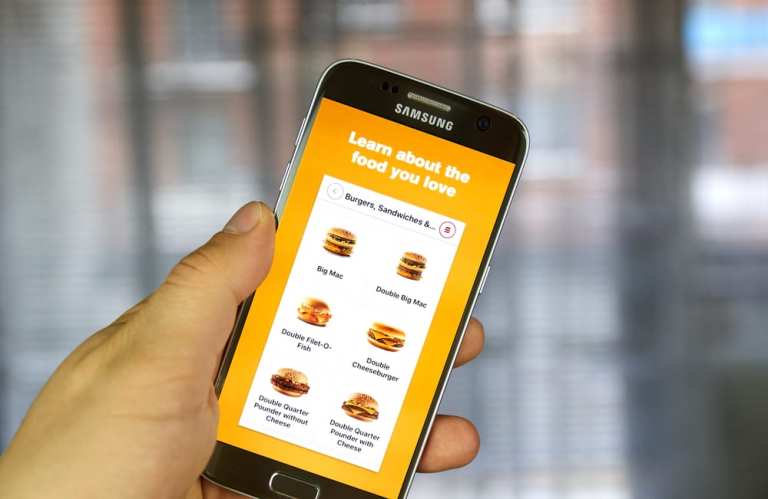How QSRs Are Going Digital To Counter COVID-Related Sales Declines

When the history of 2020’s second quarter is written, it will be a tale about companies’ staggering losses and remarkable efforts at rebuilding – especially when talking about quick-service restaurants (QSRs).
Even the biggest QSR names have been hit hard by store closures and stay-at-home orders. McDonald’s reported its Q2 revenues were down by a full third, Starbucks said same-store sales had plummeted 40 percent and Yum! Brands (parent of KFC, Pizza Hut and Taco Bell) saw revenue drop more than $1 billion.
But the pandemic didn’t bludgeon every QSR. For example, Domino’s crushed second-quarter results, with revenues surging to $920 million and U.S. same-store sales up more than 16 percent.
Why? Besides customer interest in eating takeout pizza during the pandemic, it turns out that having a decade’s head start on pivoting to digital ordering and delivery is a massive advantage in the COVID-19 era.
Boosting Digital Capabilities
Many QSR players are seeking to imitate Domino’s capabilities, diving into their own digital initiatives to make up for lost revenues as their dining rooms closed.
For example, Chipotle was “saved by the byte” and avoided full-scale Q2 disaster by upgrading its digital capabilities and order-ahead service and doubling down on its delivery deals with Uber Eats and Grubhub. As a result, the chain’s digital revenue rose 216 percent and accounted for nearly 61 percent of second-quarter sales. All told, order-ahead sales have risen 140 percent since the pandemic began, while home/office delivery has increased 125 percent.
And even as McDonald’s saw its overall results suffer, digital efforts were one bright spot for the chain. “Our strong drive-thru presence and the investments we’ve made in delivery and digital over the past few years have served us well through these uncertain times,” McDonald’s President and CEO Chris Kempczinski said when unveiling Q2 results. “We saw continued improvement in our results throughout the second quarter as markets reopened around the world.”
Starbucks President and CEO Kevin Johnson echoed such comments on his company’s earnings call, noting that the chain experienced a “significant acceleration” in the number of customers who downloaded the company’s app and joined Starbucks Rewards during Q2. The numbers grew 17 percent quarter over quarter to reach three million.
“Customers are seeking safe, familiar and convenient experiences in many aspects of their lives,” Johnson said. “In that regard, our digital assets have proven to be a competitive advantage.”
Making up for Lost Breakfast Customers
However, Johnson also alluded to an issue beyond tech that Starbucks and other breakfast-focused QSRs are facing, which is changing consumer habits.
With millions of workers no longer commuting to their offices, many are eating breakfast at home and brewing their own coffee. That’s led to a 5 percent year-over-year drop in Starbucks Rewards members who have been active over the past 90 days.
The chain expects some of that to reverse as its stores reopen. Starbucks said in its second-quarter earnings report that 96 percent of locations worldwide are now open, versus just 44 percent when the quarter began. And there’s some evidence that consumers are resuming making Starbucks runs once reserved for their morning commutes, but are just doing so a bit later in the day.
To help push figures in the right direction, Starbucks is turning to its loyalty program and making changes to the company’s payments structure. For example, a new pay-as-you-go option will allow U.S. and Canadian customers who use the Starbucks app to place orders at company-owned stores to earn Rewards stars without paying for their purchases via the app. Instead, customers can use cash, cards or mobile wallets and still earn rewards points.
“This significant new addition will open up an invitation to join Starbucks Rewards to a much wider audience,” Johnson said.
Bringing Back the Lunch Crowd
For QSRs mainly dedicated to serving office staffers at lunchtime, the pivot hasn’t just been to digital, but to digital efforts that will actually reach home-based workers. That includes things like expanded delivery options, meal kit services and family-style meal offerings.
Those changes seem likely to remain as summer passes into fall amid questions about when (or whether) schools will reopen, leaving parents’ work schedules up in the air.
Making QSR Access Remote and Friction-Free
As such unknowns proliferate, the winning digital strategy seems to involve casting a wider net – and making it easier for consumers to easily (and remotely) access QSRs whenever they choose instead of at traditional peak hours.
What does seem certain – at least among the QSR innovators PYMNTS has interviewed – is that the industry sees the challenges it faces and is willing to make changes to stay in the game.
“While people were already shifting over to eCommerce transactions, the first wave of COVID-19 really spurred things into faster motion,” Josh Buchmann, senior director of eCommerce and guest engagement for Checkers and Rally’s Drive-In Restaurants, recently told PYMNTS.